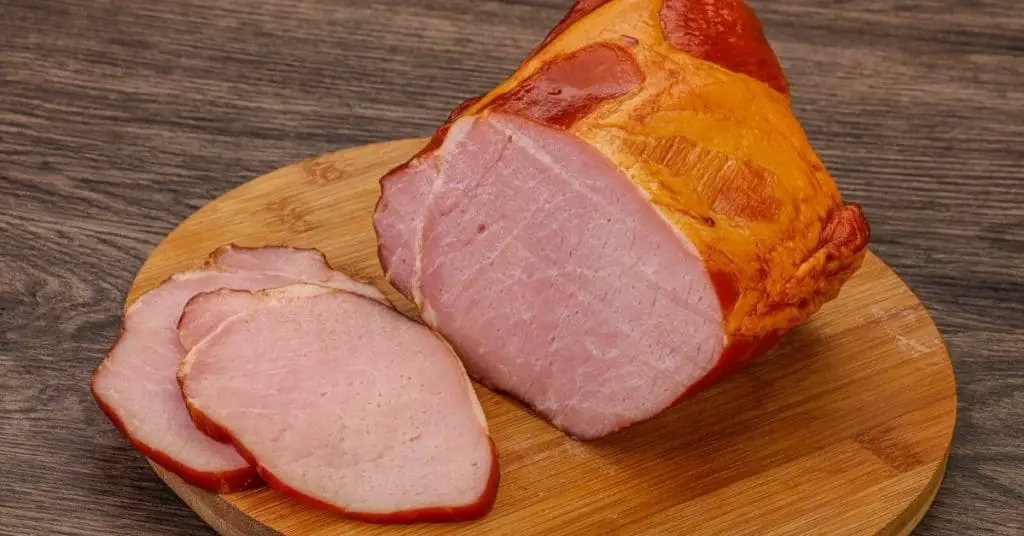Concisely, yes, you can freeze ham and preserve it for over six months if prepared and stored correctly, ensuring that the time and effort put into its preparation won’t go to waste.
A popular dish, especially over the holidays and for big family festivities, ham can be served as the main protein or used in a variety of different sides, salads, and snack platters. Since it generally comes in a bulk portion, you will likely end up with leftover ham.
We all know that ham makes a superb sandwich, but you can only have so many ham sandwiches before the meat starts to go bad.
As with most meat products, ham is a real taste-good treat and not the cheapest of foods to purchase. You really don’t want any of it to go to waste. The great thing with ham is that it can be preserved in the freezer for months to come.
If properly stored, you can make a variety of delicious leftover ham recipes for breakfast, lunch, or dinner. Here is everything you need to know to successfully freeze leftover ham.
Can Ham Be Frozen?
It would be heart-breaking to see all the time and effort that has gone into the preparation of such a gorgeous product go to waste. Luckily, leftover cooked ham can be preserved in the freezer. Ham freezes well and will last over six months when properly prepared for freezing.
How To Freeze Ham
Ham can be frozen in its entirety on the bone, or in smaller sliced portions. Below is your guide to freezing it in the way which best suits you.
How To Freeze Sliced Ham
Step 1: Slice and Cool
If your ham is not yet sliced, slice or dice it to the desired thickness with a sharp knife. Slices that are thicker, tend to retain more moisture than very thinly sliced ham. Cool the ham completely, placing it in the fridge for a while if necessary.
Step 2: Portion
Once completely cooled, divide the diced ham or slices into portions suitable for defrosting at a given time. The size of each portion may depend on what you want to use the ham for after thawing.
A great way to prevent the ham slices from sticking together is by placing a piece of freezer paper or parchment paper between each slice.
Step 3: Wrap
Wrap each portion in a layer of cling film or foil. Make sure it is tightly sealed so that no gaps are left open on the sides. If you are going to use the ham within 2 weeks, you do not have to double wrap it, so you could skip this step and go straight to step 4.
However, a double layer of protection will prevent freezer burn as well as keeping the meat from drying out, especially if it is going to be in the freezer for over 2 weeks.
Step 4: Bag It
Place each portion into a zip lock freezer bag. Press out as much air as possible and seal the bag.
Step 5: Label and Freeze
Using a permanent marker, label each bag with the contents and date of freezing before placing it into the freezer.
Note: You can use the same method to freeze the ham bone for making broth or soup at a later stage.
How To Freeze Ham on The Bone
Step 1: Cool
If freshly cooked, cool the ham completely before preparing it to go into the freezer. You can place it in the fridge to cool.
Step 2: Dry
Taking a paper towel, pat the ham dry to remove any excess moisture. The moisture will form ice crystals in the freezer causing textural damage and freezer burn.
Step 3: First Wrap
The best way to freeze ham is by placing it in a large freezer bag and removing all the excess air from the bag before closing. Alternatively, use cling film, ensuring that the ham is fully wrapped without any gaps that will expose the meat to air.
Step 4: Foil Wrap
Whether you have used a freezer bag or plastic wrap, wrap the ham a second time in a layer of aluminum foil. Again, ensure that all the corners are fully covered with no open gaps.
Step 5: Final Wrap
Place your foil-wrapped ham inside another freezer bag. The layers of packaging protect the flavor and texture of the meat. Press out all the air and seal.
Step 6: Label and Freeze
Label the bag with the date and place it in the freezer.
How To Thaw Frozen Ham
The safest way to defrost ham is by placing it in the refrigerator and leaving it overnight. Due to the susceptibility of harmful bacteria developing, it is not advisable to thaw ham at room temperature on the countertop. This applies to when freezing and thawing deli meat.
You can, however, thaw smaller portions of ham by placing the plastic bag in a bowl of cold water. A pound of ham will take atleast 30 minutes to defrost this way.
Ham can be eaten cold or heated. If you are going to reheat leftover ham in the oven, wrap it in a layer of foil to prevent too much moisture loss.
You can also brush a layer of melted butter over the ham to keep it moist. If you are using your ham in pasta or hash, you can add the thawed ham directly while cooking as it will soak in some of the cooking liquids during the preparation of your dish.
Types of Ham
The specific cut of pork used for ham comes from the hind leg of the pig. The transformation from pork to ham then starts by means of aging, curing, smoking, or cooking with various glazes. Such a wide variety of preparation methods yields a diverse choice of hams.
Below is a basic breakdown of the different preparation methods which will determine the types of ham you may find.
The Cut of Ham
Ham can be bone-in, deboned, or partially boned. The rear end is leaner and easier to slice while the shank end of the cut is usually fattier.
Curing Method
Ham can be sold fresh (uncured), brined (wet-cured), or dry-cured. Brined ham is soaked in brine (a liquid-salt mixture) and is then smoked. This is the most common type of ham found in stores.
Dry-cured ham, on the other hand, is completely covered with salt and then stored for the salt to permeate the pork as a means of preservation.
Degree of Cooking
Ham is sold either as fully cooked, partially cooked, or uncooked ham. Fully cooked ham can be eaten heated or as is, while uncooked and partially cooked ham needs to be baked to complete the cooking process prior to consumption.
Smoking
Ham is generally cold smoked for a few days or weeks. The process of smoking is commonly combined with curing and/or cooking to yield the desired end product.
Aging
Aged ham is expensive due to the lengthy time required to develop its deep and strong flavor. This ham type goes through a process of heavy curing, smoking, and aging anywhere between one and seven years.
Due to the long aging period, the ham is covered in molds that need to be scraped and washed off prior to consumption.
Glazing
Uncooked or partially cooked hams that are prepared for holiday feasts are usually baked with a slightly sweet glaze yielding the perfect sweet-salty combination.
Maple or honey glazes are a popular choice. Alternatively, hams are also flavored with a combination of spices, herbs, or even cooked fruits such as berries, pineapple, apple, and cherries.
FAQs
Conclusion
Favorite ways to cook ham are in a crock pot or slow cooker with a bit of chicken broth, roasting, baking, and a small ham can also be done on the grill. Used in hot dishes, cold dishes, sandwiches, and upscale dining, there is just no stopping a tastebud celebration when it comes to this versatile meat.
Considering its large portion size on purchasing to cook at home, you can be guaranteed that there will be holiday leftovers even at the biggest family gathering.
Luckily ham can be kept for months if wrapped sufficiently and safely frozen, making all your hard work worthwhile. Cook ham once and enjoy holiday deliciousness all year round.
Up Next:

Image by depositphotos/AndreySt









